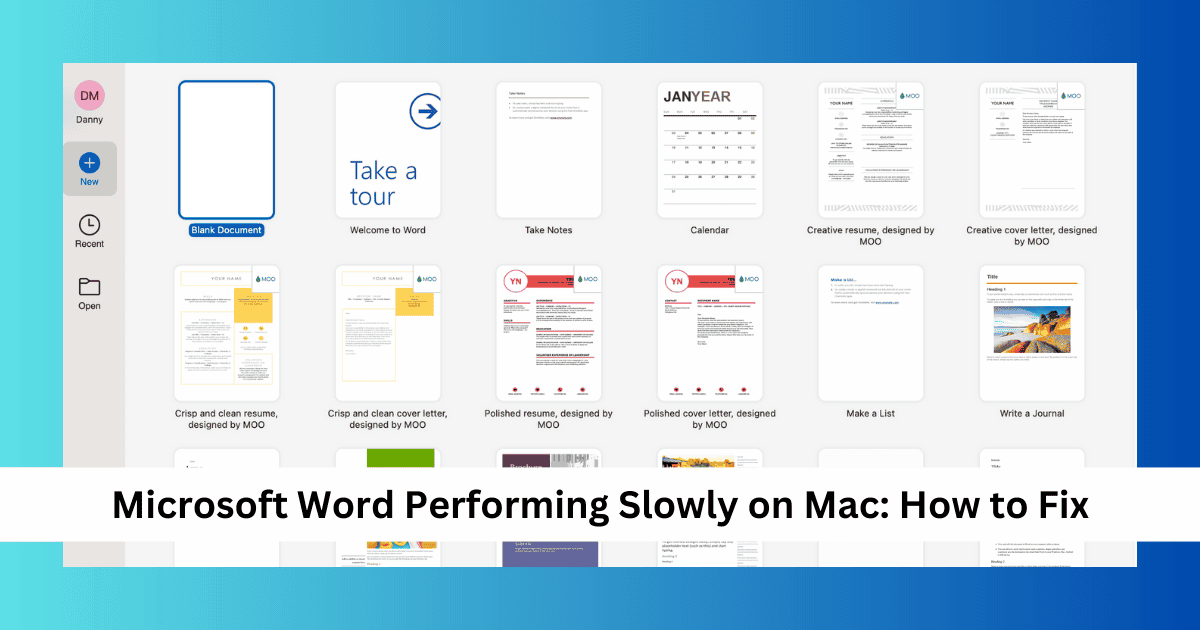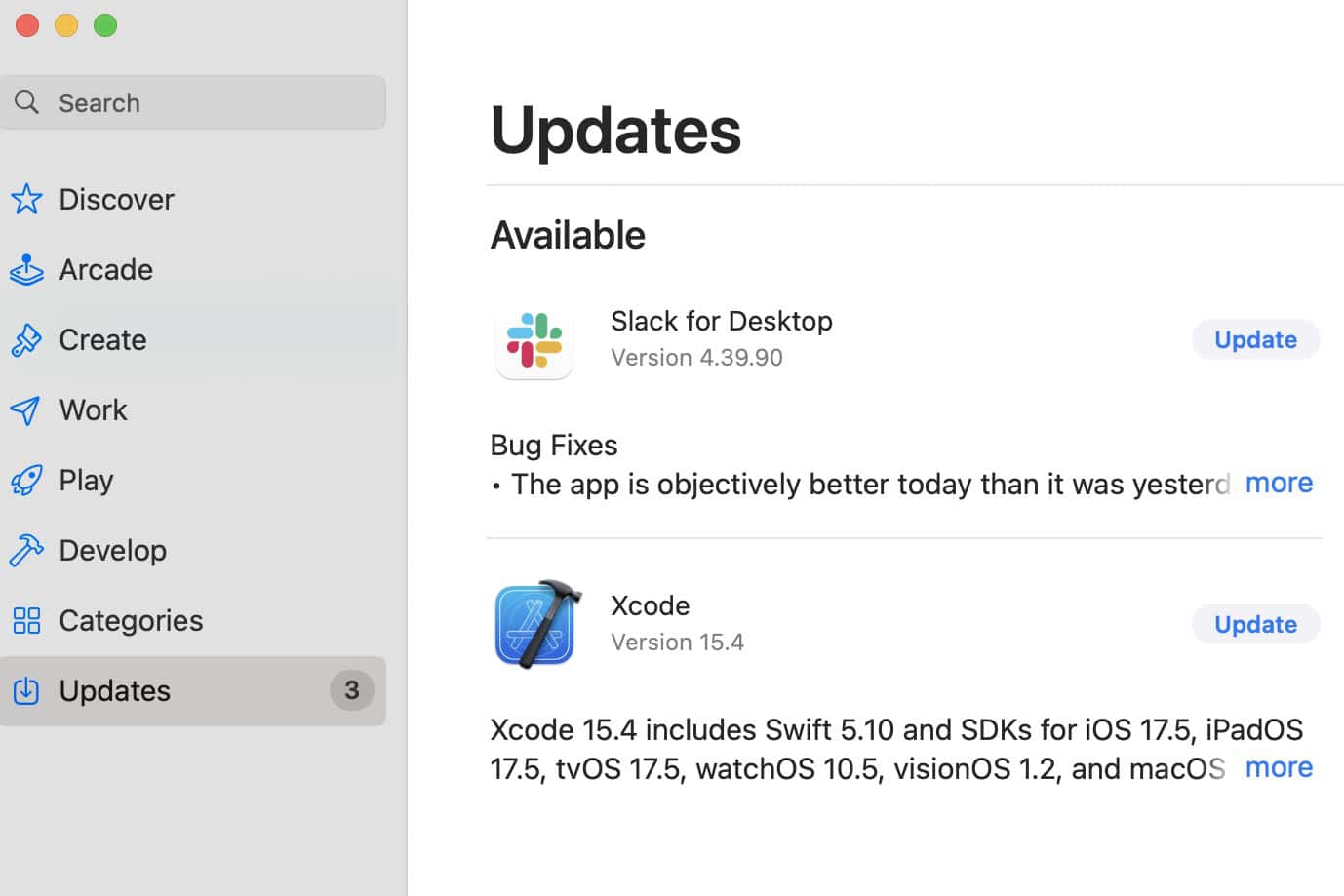Microsoft Word is one of the most popular word processors on the market. Over a billion people use it to write anything from school essays to B2B content marketing pieces. Unfortunately, it’s not free of the occasional bugs. Some users have been complaining that Microsoft Word v 16.87 is running slow on their Mac. It’s a recurring issue that carried over from its previous versions.
If you’ve been affected by this problem, the good news is that Microsoft is aware of it. Nonetheless, you can still be proactive and stop this issue from continuing to affect you. Today, I’ll show you everything you can do to make Microsoft Word run more quickly on your Mac.
Why Is Microsoft Word Running Slow?
There are several reasons why Microsoft Word is running slow on your Mac, but in many cases, you’re probably dealing with some kind of software update glitch. It’s also possible that you’re encountering problems with misconfigured document settings. For example, Word sometimes runs slower depending on your document formatting.
How to Fix Microsoft Word Running Slow on Mac
1. Look for a New Microsoft Word Update
Time needed: 3 minutes
If you only started experiencing this problem since updating, it’s worth looking for a fresh Microsoft Word update. Since Microsoft is aware of this issue, it’ll almost certainly be patched. Follow these instructions to update Microsoft Word on your Mac:
- Open Microsoft Word and navigate to the Help tab.

- Select Check for Updates.
- If your computer finds that some updates are available, select Update and wait for everything to finalize.
If you downloaded Microsoft Word from the App Store, you can follow these instructions instead.
- Navigate to the App Store.
- Select Updates.
- Under the Updates tab, select the option to update Microsoft Word if it appears.
2. Quit and Reopen Word
If updating your app doesn’t work and there are no updates available, you can try quitting and reopening Microsoft Word.
- Go to your Mac’s Dock and look for the Microsoft Word logo.
- Press the Control key and your trackpad simultaneously. A drop-down menu should then appear.
- Select Quit. When Microsoft Word has closed, reopen the app by going to your App Library.
3. Press the Esc Key on Your Mac
One of the strangest ways to get Microsoft Word working properly is by hitting the esc key. When you do this, Word will minimize and you’ll see either another app or your desktop screen. When you’re ready to follow this tip, simply tap esc. Once you’ve done that, reopen Word and see if you managed to solve the issue.
4. Try Using the Web Version of Microsoft Word
While I want to fix the problem with your Microsoft Word desktop app, it’s nice to know that you at least have an alternative if it takes longer than it should. If nothing has worked so far, I suggest using the web version of Microsoft Word as a stop-gap. You should be able to access the documents you’ve been working on without too many problems.
Here’s how to use the Microsoft Word web app:
- Go to the Microsoft 365 website and select Log In.
- Sign into your Microsoft account.
- Select Word in the top left-hand corner. Then, either start a blank document or look for whatever you were working for via the search bar or Recently Opened.
 NOTE
NOTE
5. Delete Some of Your Word Documents
Sometimes, Microsoft Word’s performance issues are a result of too many files and folders. So, deleting some of your documents might be exactly what you need to do next.
If you need to, make sure you’ve backed up the document on an external hard drive. Once you’ve done that, follow these instructions.
- In Microsoft Word, select the Recent tab.
- Press Control + trackpad over each document you want to remove. Then, select Delete.
- Select Delete again when the dropdown menu appears to confirm your decision.
In addition to deleting via the drop-down menu, you can use the icon with three horizontal dots. The process thereafter is identical once you’ve done that.
6. Install a Previous Version of Word
Another option, which isn’t very convenient but can still work, is installing a previous version of Word. If you want to do that, follow the instructions outlined in this separate guide on installing an older version of Microsoft Office.
7. Try Reducing the Size of Your Word Documents
Deleting documents you don’t need can help Microsoft Word run more effectively, but reducing the size of your current Word documents is also worth thinking about. You can do this in several ways, including:
- Inserting images and visual content of smaller file sizes (you can reduce the file size on your Mac and re-insert them).
- Deleting pages that you don’t need.
- Clearing unnecessary on-page copy.
What you choose to do will depend on what is and isn’t necessary in your document. Don’t make needless changes, but do think about where you can clear storage space. Once you’ve done that, try closing and reopening Word; you should now hopefully be able to use everything like normal again.
8. Optimize Your Word Documents
In addition to reducing file sizes, you can optimize your Word documents in other ways. For example, your formatting will sometimes slow down Word. Go through any changes you’ve made and ensure that each of these is absolutely necessary; if they aren’t, reset them to the default.
9. Turn Off AutoSave
AutoSave is useful if you don’t want to continuously worry about something causing your app to crash. However, it can also be detrimental to Microsoft Word’s performance. So, if nothing so far has worked, turning off AutoSave is a good idea.
- Go to File > Options and select Save.
- Remove the tick next to AutoSave OneDrive and SharePoint Online files by default on Word.
- Close and reopen Word to ensure that these changes take effect.
10. Delete and Re-Install Microsoft Word
Another way to solve this problem is by deleting and re-installing Microsoft Word. The easiest way to do so is via Finder.
- Open Finder and select Applications, before looking for Microsoft Word.
- Drag and drop Microsoft Word into your Trash folder.
- You might need to use Touch ID or another verification method to finalize your deletion. If that’s required, select this.
- Go to your Trash folder and delete the app.
- Re-install Microsoft Word. You can do this via the App Store or Microsoft 365 website; it doesn’t matter which one you choose.
Microsoft Word might be slow for several reasons, but there are plenty of ways to fix this problem. You can uninstall the app if needed, but it’s also possible to make simpler adjustments before that becomes an issue. Having read this guide, you should hopefully now be on track.








